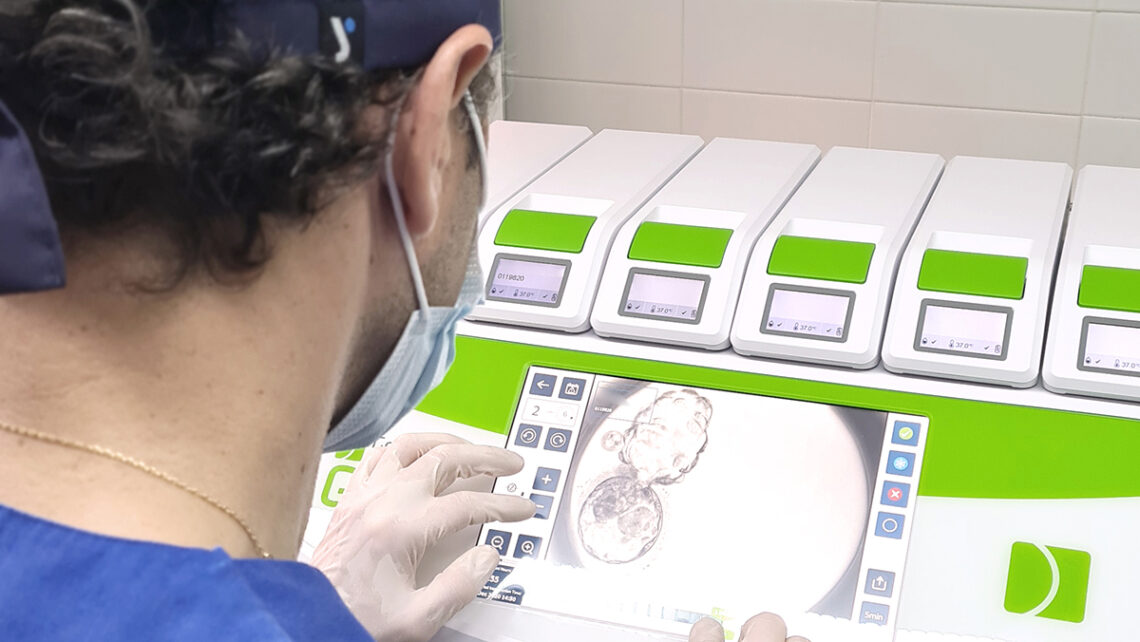
How can the best spermatozoon for fertilising an egg be selected?
Selection of the spermatozoon capable of fertilising an egg and generating a viable embryo is a subject that has been covered in a great number of studies aiming to provide this question with an answer.
Although assisted reproduction techniques have been used for dealing with fertility issues for many years, there is still room for improvement in terms of the results obtained. First of all, we need to fully determine the role of the spermatozoon because it tends to be thought of simply as the transporter of the father’s genetic material with no impact on later development. This idea has already been turned on its head and sperm does not only play a role in the fertilisation process. An abnormal spermatozoon can give rise to abnormal embryos and can even influence implantation failure.
Índice
Assessments for optimum sperm selection
Routine semen sample preparation techniques (capacitation) facilitate the selection of spermatozoa with optimum motility and morphology. But what about the characteristics we are unable to assess during ICSI (intracytoplasmic sperm injection)?
Some examples of these characteristics include:
- DNA integrity
- Spermatozoon maturity
- Spermatozoon ultra-morphology
MACS and annexin V-GW: magnetic fields for selecting the most suitable spermatozoa
Selection of apt spermatozoa in semen samples with a high degree of DNA fragmentation has improved with the arrival of new preapoptotic spermatozoa selection techniques (in programmed cell death phase). The most commonly used technique is magnetic activation cell separation (MACS) in which the spermatozoa with least potential are retained and the spermatozoa with complete DNA are selected. Studies comparing the results of treatment in which the MACS technique has been used to complement conventional capacitation techniques in sperm selection have been carried out and an increase in embryo division and pregnancy rates were observed. There is currently another technique available that is based on the same principle as MACS: the annexin V glass wool technique. The main difference is in the way in which the sample is processed.
Fertile Chip: selection in cases of double strand fragmentation
DNA fragmentation can be single or double strand. Techniques, such as Fertile Chip®, for selecting suitable spermatozoa have been developed for use in cases of double strand fragmentation. The method is based on spermatozoa motility. The motility in spermatozoa with double strand fragmentation is very characteristic and Fertile Chip® facilitates the process of separating suitable spermatozoa from unsuitable spermatozoa. It is a simple technique that is easy to use and it could be applied to patients who present implantation failure issues, experience recurrent pregnancy loss or have slow embryo division issues between days 3 and 5 of embryo development. Very poor quality sperm samples can limit its use. There are also limitations in cases of samples that have been cryopreserved and do not allow for recovery of sufficient spermatozoa for performing micro-injection.
PICSI: discrimination in spermatozoa with aneuploidies
Spermatozoa maturity is linked to the presence of aneuploidies (abnormalities that have an impact on the number of chromosomes). There are specific means of selecting mature spermatozoa such as the Sperm Flow technique although the one most commonly used for assessing the maturity of the spermatozoa is a technique known as PICSI.
This technique is based on binding mature spermatozoa to a surface (a microinjection dish) containing hyaluronan (AH) so that bound and, therefore, mature spermatozoa can be selected for microinjection. Recent studies have proven that binding the spermatozoa and the AH does not give improved fertilisation rates and embryo division; better embryo quality; nor improved pregnancy or pregnancy loss rates. The positive impact of binding the spermatozoa and the AH is a reduction in DNA fragmentation because only the spermatozoa with the best DNA integrity and, therefore, a decreased risk of embryo aneuploidies, are selected.
Other strategies for optimising sperm selection
The morphological characteristics of sperm are the main factor in male fertilisation capacity. Specific criteria that determine correct sperm morphology have been established (Kruger and Coetzee, 1999), but how can we assess morphology during ICSI? The ICSI technique is used in in vitro fertilisation laboratories at 400x magnification (magnification for observation under the microscope). In order to assess sperm ultra-morphology, observation at 1000x magnification is required. In response to this limitation, methods for normal spermatozoa selection in real time have been developed:
- MSOME (motile sperm organelle morphology examination).
- CLASS (confocal light absorption and scattering spectroscopic).
- Observation of spermatozoa birefringence using polarised light.
- IMSI (intracytoplasmic morphologically selected sperm injection), which is the most well-known of them all.
All these techniques need to be carried out by experienced staff and, since they are subjective, sperm selection varies from person to person.
The research carried out in order to evaluate the effectiveness of the techniques did not observe differences in terms of fertilisation rates and embryo quality when they were used instead of conventional ICSI. However, pregnancy rates did increase. Additional studies to evaluate long-term efficiency are necessary.
Dr Dori Rodríguez, biologist at Instituto Bernabeu.
